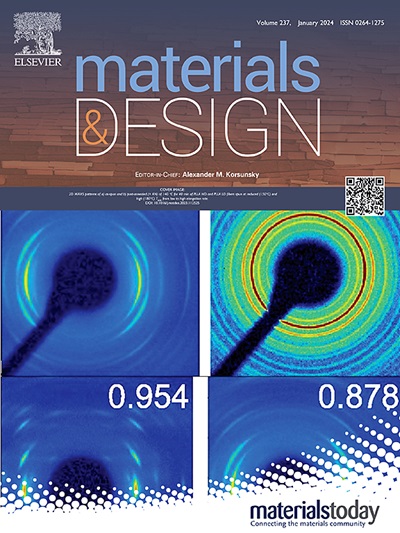CALPHAD-aided design and model prediction achieve the strength and quench sensitivity balance of Al-Zn-Mg-Cu alloys
IF 7.6
2区 材料科学
Q1 MATERIALS SCIENCE, MULTIDISCIPLINARY
引用次数: 0
Abstract
Balancing strength and quench sensitivity in Al-Zn-Mg-Cu alloys through traditional composition optimization is difficult. This work proposes a novel approach to control the Zn/Mg ratio (RZn/Mg) by employing a simplified CALPHAD-aided equivalence precipitation (EP) model of η-type precipitates to balance strength and quench sensitivity. Alloys with varying RZn/Mg but the same theoretical mass fraction of η-type precipitates (Mη) were designed and investigated. The results show that alloys with equivalent Mη have similar strength across different RZn/Mg due to the comparable transformation activation energies of the η′ phase. When the Mη and total (Zn + Mg) content remain constant, alloys with RZn/Mg above the critical RZn/Mg show lower quench sensitivity, attributed to the lower nucleation rate of quench-induced η phase. The EP model improves predictions for precipitation strengthening and quench sensitivity by accounting for RZn/Mg effects on η-type precipitates. This optimized model accurately predicts yield strength and quench sensitivity, providing a strategy for achieving a balance between strength and quench sensitivity in Al-Zn-Mg-Cu alloys.

calphad辅助设计和模型预测实现了Al-Zn-Mg-Cu合金强度和淬火灵敏度的平衡
通过传统的成分优化来平衡Al-Zn-Mg-Cu合金的强度和淬火灵敏度是很困难的。本文提出了一种控制Zn/Mg比(RZn/Mg)的新方法,即采用简化的calphad辅助等效析出(EP)模型来平衡η型析出物的强度和淬火敏感性。设计并研究了不同RZn/Mg但η型析出相(Mη)理论质量分数相同的合金。结果表明,由于η′相的转变活化能相当,具有等效Mη的合金在不同RZn/Mg下具有相似的强度。当Mη和总(Zn + Mg)含量保持不变时,RZn/Mg高于临界RZn/Mg的合金表现出较低的淬火敏感性,这是由于淬火诱导η相的成核速率较低。通过考虑RZn/Mg对η型析出相的影响,EP模型改进了对析出强化和淬火敏感性的预测。该优化模型准确地预测了Al-Zn-Mg-Cu合金的屈服强度和淬火敏感性,为实现强度和淬火敏感性之间的平衡提供了一种策略。
本文章由计算机程序翻译,如有差异,请以英文原文为准。
求助全文
约1分钟内获得全文
求助全文
来源期刊

Materials & Design
Engineering-Mechanical Engineering
CiteScore
14.30
自引率
7.10%
发文量
1028
审稿时长
85 days
期刊介绍:
Materials and Design is a multi-disciplinary journal that publishes original research reports, review articles, and express communications. The journal focuses on studying the structure and properties of inorganic and organic materials, advancements in synthesis, processing, characterization, and testing, the design of materials and engineering systems, and their applications in technology. It aims to bring together various aspects of materials science, engineering, physics, and chemistry.
The journal explores themes ranging from materials to design and aims to reveal the connections between natural and artificial materials, as well as experiment and modeling. Manuscripts submitted to Materials and Design should contain elements of discovery and surprise, as they often contribute new insights into the architecture and function of matter.
 求助内容:
求助内容: 应助结果提醒方式:
应助结果提醒方式:


